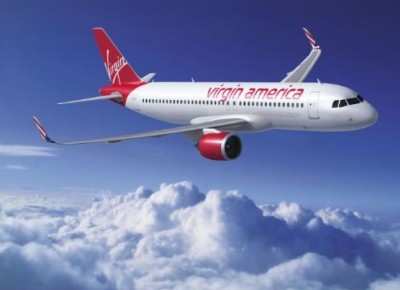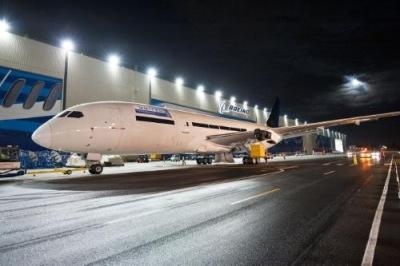BTS Reports Mishandled Baggage At All-Time Low, No Tarmac Delays That Exceed Federal Guidelines
The nation’s largest airlines posted an on-time arrival rate of 86.2 percent in February, up from both the 74.5 percent on-time rate of February 2011 and from January 2012’s 83.7 percent rate, according to the U.S. Department of Transportation’s Air Travel Consumer Report released Thursday. The on-time arrival performance during February 2012 was the highest February percentage on record since comparable on-time data was first reported in 1995. In addition, the reporting airlines compiled a mishandled baggage rate of 2.64 reports per 1,000 passengers, the lowest rate for any month since carriers first reported this data in September 1987.

Cancellations were also down in February from a year ago, as carriers canceled 1.0 percent of their scheduled domestic flights, down from February 2011’s 4.9 percent cancellation rate and down from January 2012’s 1.5 percent.
Airlines reported no tarmac delays of more than three hours on domestic flights or tarmac delays of more than four hours on international flights in February.
The larger U.S. airlines have been required to file complete reports on their long tarmac delays for domestic flights since October 2008. Under a new rule that took effect August 23, 2011, all U.S. and foreign airlines operating at least one aircraft with 30 or more passenger seats must report lengthy tarmac delays at U.S. airports.
Also beginning August 23, carriers operating international flights may not allow tarmac delays at U.S. airports to last longer than four hours. There is a separate three-hour limit on tarmac delays involving domestic flights, which went into effect in April 2010. Exceptions to the time limits for both domestic and international flights are allowed only for safety, security or air traffic control-related reasons.
The monthly report also includes data on on-time performance, chronically delayed flights, flight cancellations, and the causes of flight delays filed with the Department’s Bureau of Transportation Statistics (BTS) by the reporting carriers. In addition, the report contains information on consumer service, disability and discrimination complaints received by DOT’s Aviation Consumer Protection Division. This report also includes reports of incidents involving pets traveling by air, as required to be filed by U.S. carriers.

At the end of February, there were no flights that were chronically delayed – more than 30 minutes late more than 50 percent of the time – for two consecutive months or more. A list of flights that were chronically delayed for a single month is available from BTS. During the period, the carriers filing on-time performance data reported that 4.13 percent of their flights were delayed by aviation system delays, compared to 5.02 percent in January; 4.33 percent by late-arriving aircraft, compared to 4.93 percent in January; 3.85 percent by factors within the airline’s control, such as maintenance or crew problems, compared to 4.06 percent in January; 0.35 percent by extreme weather, compared to 0.55 percent in January; and 0.03 percent for security reasons, compared to 0.02 percent in January. Weather is a factor in both the extreme-weather category and the aviation-system category. This includes delays due to the re-routing of flights by DOT’s Federal Aviation Administration in
consultation with the carriers involved. Weather is also a factor in delays attributed to late-arriving aircraft, although airlines do not report specific causes in that category.
Data collected by BTS also shows the percentage of late flights delayed by weather, including those reported in either the category of extreme weather or included in National Aviation System delays. In February, 32.65 percent of late flights were delayed by weather, down 10.25 percent from February 2011, when 36.38 percent of late flights were delayed by weather, and down 7.92 percent from January when 35.46 percent of late flights were delayed by weather.

The U.S. carriers reporting flight delays and mishandled baggage data posted a mishandled baggage rate of 2.64 reports per 1,000 passengers in February, an all-time low for any month, down from both February 2011’s rate of 3.66 and January 2012’s rate of 3.30. Carriers also reported four incidents involving the loss, death, or injury of pets while traveling by air, up from the two reports filed in February 2011, but down from January 2012’s total of eight. February’s incidents involved two pet deaths and two pet injuries.
The Department received 691 complaints about airline service from consumers during the month, up 0.4 percent from the 688 complaints received in February 2011, but down 26.1 percent from the total of 935 filed in January 2012. The report also contains a tabulation of complaints filed with DOT in February against airlines regarding the treatment of passengers with disabilities. The Department received a total of 38 disability-related complaints in February 2012, down from both the 40 disability complaints received in February 2011 and the total of 39 filed in January 2012.
Finally, the Department received four complaints alleging discrimination by airlines due to factors other than disability – such as race, religion, national origin or sex – down from the total of 10 filed in both February 2011 and in January 2012.
 ANN's Daily Aero-Linx (04.13.24)
ANN's Daily Aero-Linx (04.13.24) ANN's Daily Aero-Term (04.13.24): Beyond Visual Line Of Sight (BVLOS)
ANN's Daily Aero-Term (04.13.24): Beyond Visual Line Of Sight (BVLOS) Airborne 04.09.24: SnF24!, Piper-DeltaHawk!, Fisher Update, Junkers
Airborne 04.09.24: SnF24!, Piper-DeltaHawk!, Fisher Update, Junkers Aero-News: Quote of the Day (04.14.24)
Aero-News: Quote of the Day (04.14.24) ANN's Daily Aero-Term (04.14.24): Maximum Authorized Altitude
ANN's Daily Aero-Term (04.14.24): Maximum Authorized Altitude





